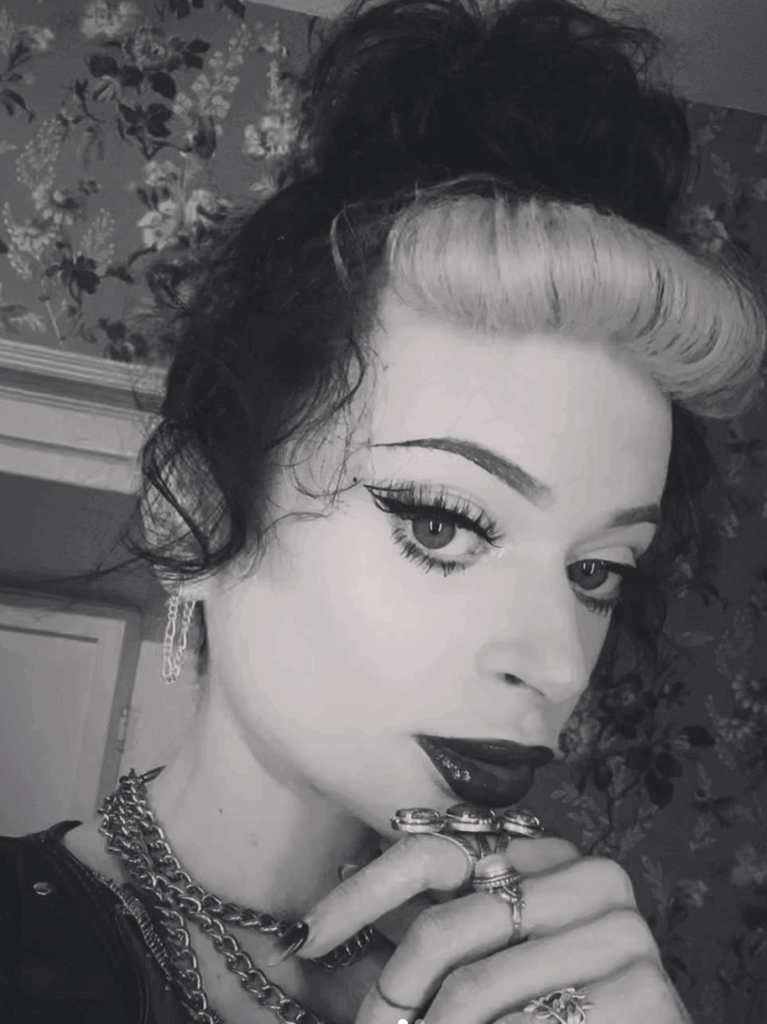Ruth Codd is one of the most exciting new faces in entertainment. The Irish actress went from barber and make-up artist to TikTok creator, then made a dramatic leap to starring in Netflix’s horror hits and landing her first big-screen role. She’s also become an authentic voice for disability representation, showing that mainstream film and television can embrace real lived experiences. Her journey is inspiring and unconventional — the kind of story that feels very modern and very possible in the age of digital discovery.
Early life and background
Ruth Codd was born on 13 June 1996 in Wexford, a coastal town in south-east Ireland. She grew up in a close family and has often spoken about having a creative streak but not imagining a path into show business. Instead, she pursued practical skills and a trade. By her late teens she was working in the beauty industry, first as a make-up artist and then as a barber. She enjoyed working with clients and had built a steady career.
Her life changed dramatically when she was 15. A serious foot injury left her dealing with long-term pain and complications. Over the years she underwent multiple surgeries and tried to keep up her mobility, but by 23 she made the life-altering decision to have her right leg amputated below the knee. It was a huge personal challenge, but Ruth has described it as ultimately freeing. She has said that living with pain was exhausting, and after the surgery she could focus on living fully again. That experience has shaped her resilience and her belief in authentic self-representation.
Finding a voice on TikTok
@ruthcoddsnotdead My obligatory bi monthly vlog #traveltok #survivalskills #bears ♬ original sound – ruthcoddsnotdead
When the COVID-19 pandemic hit in 2020, Ruth’s barbering work disappeared almost overnight. Like many, she turned to social media for connection and creativity. TikTok became her outlet: she filmed funny, candid and often brutally honest videos about life as an amputee, beauty hacks, and little skits that showed her sharp sense of humour. Her wit and openness struck a chord with viewers. In less than a year she built an audience of more than 670,000 followers and millions of likes.
Her content wasn’t heavily polished; it felt real, unfiltered and self-deprecating in the way that thrives on TikTok. That authenticity drew in a large audience but also caught the eye of casting directors looking for new talent — particularly for roles representing disabled characters with depth and personality.
A Netflix discovery
Casting for Netflix’s The Midnight Club was under way when Ruth came onto the radar. The show, created by Mike Flanagan and Leah Fong, needed young actors who could bring real presence to a story about terminally ill teenagers living together in a hospice. One of the characters, Anya, was written as a lower-leg amputee. Traditionally, a role like this might have gone to an able-bodied actor, but the creative team wanted someone authentic.
Ruth, despite never having professionally acted, was invited to audition. She later admitted she was terrified and worried she might be out of her depth, but she impressed the team with her charisma and natural ability. Landing the role was life-changing: she went from filming short videos at home to being on a major Netflix production with an international audience.
The Midnight Club: breakout success
Released in 2022, The Midnight Club quickly found a loyal audience. Ruth’s character, Anya, was a sarcastic, funny and complex young woman dealing with terminal illness. Fans loved her sharp humour and the way she balanced toughness with vulnerability. Critics noted how refreshing it was to see a disabled character played by someone with lived experience, without reducing the character to her disability.
Ruth herself has said she wanted Anya to feel fully rounded: a person with anger, wit, hope and flaws, not just a symbol. Her performance earned praise across entertainment media and made her one of the most talked-about newcomers on Netflix that year.
Working with Mike Flanagan again
Mike Flanagan is known for building creative “families” and re-casting actors he trusts. After The Midnight Club, he brought Ruth back for his 2023 Netflix gothic horror series, The Fall of the House of Usher. Ruth played Juno Usher, a mysterious and quietly powerful character who appears in some of the show’s most striking scenes.
This second collaboration cemented her reputation as a serious actress rather than a one-time viral discovery. She proved she could handle complex material and perform alongside established names in an ensemble cast. For Ruth, this was also a financial step up: repeat Netflix contracts typically pay more, helping her move from modest first-time actor fees to a more sustainable income.
From social media to film to reality tv
In 2024, Ruth’s profile grew again. Along with the likes of Alan Carr and Charlotte Church, she joined the celebrity edition of The Traitors UK due to air in 2025, the hugely popular psychological reality series. Appearing on mainstream primetime TV introduced her to a wider UK audience beyond Netflix’s horror fanbase. At the height of her Netflix success, Ruth made the deliberate decision to delete her TikTok account. For someone whose career had started online, this surprised many fans. She explained that she wanted to focus on acting and avoid the constant noise and pressure of social media. The choice underlined her commitment to craft and her wish to be seen first and foremost as an actress.
She also landed her first major film role: Phlegma in the live-action remake of How to Train Your Dragon, due for release in 2025. This marks a big step into global cinema. The DreamWorks franchise has huge built-in audiences, and a role in a family blockbuster can dramatically increase both visibility and future earning power.
Ruth Codd’s net worth and career earnings

Exact figures on Ruth Codd’s net worth aren’t publicly available, and celebrity finance sites often make rough guesses. However, it’s clear her financial situation has transformed. Before 2020 she was earning a standard trade income as a barber and make-up artist. TikTok gave her some early brand collaborations but not major wealth.
Acting changed that trajectory. A debut season lead in a Netflix series can pay anywhere from the low tens of thousands to more, and a second series with a proven showrunner typically comes with a raise. Adding reality TV fees and a Hollywood film role, it’s reasonable to estimate Ruth’s net worth in 2025 to be in the mid-six-figure range — likely somewhere between £400,000 and £600,000. With her move into cinema and potential brand partnerships, she could pass £1 million within a few years if her momentum continues.
Ruth’s rise is striking because it overturns so many assumptions about the entertainment industry. She had no formal training, no insider connections and started acting at 26 after losing her job. Social media gave her visibility, but she refused to stay boxed in as an influencer. Her work shows that disability can be portrayed with depth and humour, not tokenism.
For young disabled people and late bloomers in the creative world, Ruth is proof that talent and authenticity can break through gatekeeping. She’s also showing the industry that audiences respond to representation that feels lived-in and real.
What to expect from her
With a big studio film and mainstream TV exposure on the horizon, Ruth Codd is positioned for an even bigger career. If How to Train Your Dragon succeeds, it will introduce her to millions of new viewers and casting directors in Hollywood. More streaming platforms and studios are searching for authentic, diverse talent, and Ruth fits perfectly into that trend.
She’s also in a position to work selectively. By stepping away from TikTok and being careful about brand deals, she is building a long-term acting career rather than chasing quick influencer money. Should she decide to write, produce or advocate for disability inclusion in entertainment, she could expand her influence even further.
Ruth Codd’s story is one of resilience, talent and unexpected opportunity. From a young barber in Wexford to a Netflix star and soon a Hollywood actress, she has charted a path that feels inspiring for anyone outside the traditional acting pipeline. While her net worth today is likely still under £1 million, her career is only just beginning — and her influence on representation is already profound.
If she continues to land film and TV roles, builds thoughtful partnerships and uses her platform wisely, Ruth Codd could become one of the most important new Irish talents of her generation, both artistically and financially.

Topic expertise: Student Cities, Cost of Living, Nightlife, Wellbeing, Accommodation
FAQs on Ruth Codd
Ruth Codd is an Irish actress and former makeup artist who gained global recognition for her breakout role as Anya in the Netflix horror series The Midnight Club. She has become known for her talent, authenticity, and representation of disabled actors on screen.
She began as a makeup artist and gained a following on social media for her honest, humorous videos about life as an amputee. Her content caught the attention of casting directors, leading to her first acting role in The Midnight Club.
She is celebrated for her raw and relatable performances, as well as for bringing disability representation to mainstream media. Her success shows that authentic casting of disabled actors can create meaningful and powerful storytelling.
After her breakout in The Midnight Club, Ruth appeared in the Netflix series The Fall of the House of Usher and continues to build her acting career with more TV and film roles in development.
Before acting, Ruth was popular on social media for her honest takes on living with a disability, body positivity, and self confidence. She has also been praised for using her platform to advocate for better representation and inclusivity in the entertainment industry.
Ruth Codd’s exact net worth has not been publicly confirmed, it is estimated to be between £400,000 and £600,000. As a rising actress with major Netflix roles, her earnings are growing, but there are no reliable figures or official estimates currently available.

